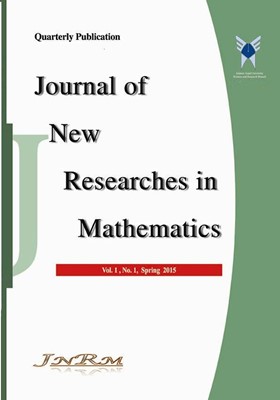DEA تصادفی با استفاده از توزیع چوله - نرمال در ساختار خطا
محورهای موضوعی : آمار
علی نظری
1
![]() ,
محمد حسین بهزادی
2
,
محمد حسین بهزادی
2
1 - گروه علوم پایه، ،دانشگاه آزاد اسلامی واحد ابهر، ابهر، ایران
2 - گروه آمار، ،دانشگاه آزاد اسلامی واحد علوم و تحقیقات، تهران، ایران
کلید واژه: Data Envelopment Analysis, Efficiency, Skew-Normal distribution, Error Structur,
چکیده مقاله :
تحلیل پوششی دادهها (DEA) روشی ناپارامتری برای تعین کارایی واحدهای تصمیم گیرنده (DMU) با بکارگیری برنامهریزی ریاضی است. تقریباً، در تمام تحقیقات قبلی در تحلیل پوششی دادههای تصادفی، فرض بر این یوده که توزیع متغیرهای ورودی و خروجی نرمال استاما در مسایل کاربردی ممکن است این فرض برقرار نباشد. بنابراین، بکارگیری توزیع نرمال منجر به نتیجهگیری غلط خواهد شد. در این مقاله، مدل BCC تصادفی برای اندازهگیری کارایی تصادفی واحدهای تصمیمگیرنده با فرض چوله نرمال بودن دادههای ورودیها و خروجیها ارایه شده است. به علاوه نشان داده شده که مدل پیشنهادی در برگیرندهی مدلی با توزیع نرمال نیز است. در پایان، این مدل برای اندازهگیریکارایی 25 شعبه از یک بانک به کار گرفته شده است.
The stochastic data envelopment analysis (SDEA) was developed considering the value ofinputs and outputs as random variables. Therefore, statistical distributions play an importantrole in this regard. The skew-normal (SN) distribution is a family of probability densityfunctions that is frequently used in practical situations. In this paper, we assume that the inputand output variables are skew-normally distributed. With introducing asymmetric errorstructure for random variables of SN distribution, a stochastic BCC model is provided. Theproposed model includes BCC model assuming a normal distribution of data as well. Finally,the proposed model is used in a numerical example
[1] Azzalini, A. (1985). “A Class of Distribution Which Includes the Normal Ones”. Scandinavia Journal of statistic. 12, 171-178.
[2] Azzalini, A. (2005). “The Skew Normal Distribution and Related Multivariate Families”. Scandinavia Journal of statistics. 32, 159-188.
[3] Banker, R.D., Charnes, A. and Cooper, W.W. (1984). “Some models for estimating technical and scale inefficiency in data envelopment analysis”. Management Science. 39, 1078-1092.
[4] Behzadi, M.H., Mirbolouki, M. (2009). “Symmetric Error Structure in Stochastic DEA”. International Journal of Industrial Mathematics. 4, 335-343.
[5] Charnes, A., Cooper, W.W. and Rhodes, E. (1978). “Measuring the efficiency of decision making units”. European Journal of Operational Research. 2, 429-444.
[6] Cooper, W.W., Deng, H., Huang, Z. and Li, S.X. (2004). “Chance constrained programming approaches to congestion in stochastic data envelopment analysis”. European Journal of Operational Research. 155, 487-591.
[7] Cooper, W.W., Huang, Z. and Li, S.X. (1996a). “Satisficing DEA model under chance constraints”. The Annals of Operational Research. 66, 259-279.
[8] Cooper, W.W., Thompson, R.G. and Thrall, R. (1996b). “Extensions and new development in DEA”. The Annals of Operational Research. 66, 3-46.
[9] Farrell, M. J. (1957), “The Measurement of Productive Efficiency”. Journal of the Royal Statistical Society. Series A (General). 120(3), 253-290.
[10] Hosseinzadeh-Lotfi, F., Nematollahi, N., Behzadi, M.H., Mirbolouki, M. and Moghadas, Z. (2012). “Centralized resource allocation with stochastic data”. Journal of computation and Applied Mathematics. 236, 1783-1788
[11] Huang, Z &, Li, S.X. (2001). “Stochastic DEA model with different types of input-output disturbance”. Journal of Productivity Analysis. 15, 95- 113.
[12] Khodabakhshi, M. (2009). “Estimating most productive scale size with stochastic data in data envelopment analysis”. Economic Modelling. 26, 68- 973.
[13] Khodabakhshi, M., Asgharian, M. (2008). “An input relaxation measure of efficiency in stochastic data envelopment analysis”. Applied Mathematical Modelling. 33, 2010-1023.


